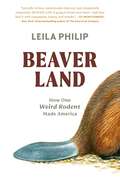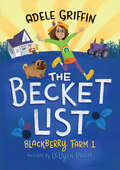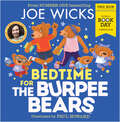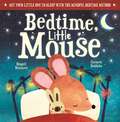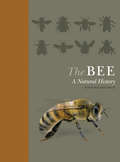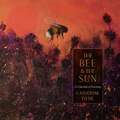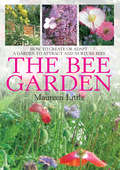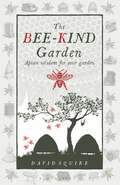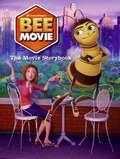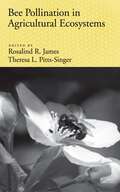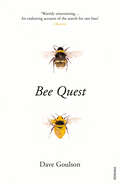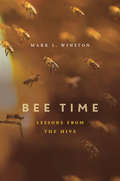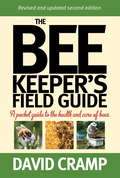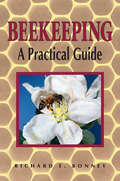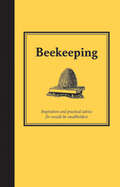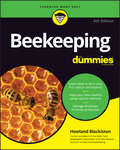- Table View
- List View
Beaverland: How One Weird Rodent Made America
by Leila PhilipAn intimate and revelatory dive into the world of the beaver—the wonderfully weird rodent that has surprisingly shaped American history and may save its ecological future. From award-winning writer Leila Philip, Beaverland is a masterful work of narrative science writing, a book that highlights, though history and contemporary storytelling, how this weird rodent plays an oversized role in American history and its future. She follows fur trappers who lead her through waist high water, fur traders and fur auctioneers, as well as wildlife managers, PETA activists, Native American environmental vigilantes, scientists, engineers, and the colorful group of activists known as beaver believers. Beginning with the early trans-Atlantic trade in North America, Leila Philip traces the beaver&’s profound influence on our nation&’s early economy and feverish western expansion, its first corporations and multi-millionaires. In her pursuit of this weird and wonderful animal, she introduces us to people whose lives are devoted to the beaver, including a Harvard scientist from the Blackfeet Reservation in Montana, who uses drones to create 3-dimensional images of beaver dams; and an environmental restoration consultant in the Chesapeake whose nickname is the &“beaver whisperer&”. What emerges is a poignant personal narrative, a startling portrait of the secretive world of the contemporary fur trade, and an engrossing ecological and historical investigation of these heroic animals who, once trapped to the point of extinction, have returned to the landscape as one of the greatest conservation stories of the 20th century. Beautifully written and impeccably researched, Beaverland reveals the profound ways in which one odd creature and the trade surrounding it has shaped history, culture, and our environment. The New York Times Editors' Choice NPR Science Friday Book Club Selection
Beavers: Boreal Ecosystem Engineers
by Carol A. JohnstonBridging the fields of ecosystem science and landscape ecology, this book integrates Dr. Carol Johnston's research on beaver ecosystem alteration at Voyageurs National Park. The findings about the vegetation, soils, and chemistry of beaver impoundments synthesized in the text provide a cohesive reference useful to wetland scientists, ecosystems and landscape ecologysts, wildlife managers, and students. The beaver, Castor canadensis, is an ecosystem engineer unequaled in its capacity to alter landscapes through browsing and dam building, whose population recovery has re-established environmental conditions that probably existed for millenia prior to its near extirpation by trapping in the 1800s and 1900s. Beavers continue to regain much of their natural range throughout North America, changing stream and forest ecosystems in ways that may be lauded or vilified. Interest in beavers by ecologists remains keen as new evidence emerges about the ecological, hydrological, and biogeochemical effects of beaver browsing and construction. There is a critical need for ecologists and land managers to understand the potential magnitude, persistence, and ecosystem services of beaver landscape transformation. The 88-year record of beaver landscape occupation and alteration documented by Dr. Carol Johnston and colleagues from aerial photography and field work provides a unique resource toward understanding the ecosystem effects and sustainability of beaver activity.
Beavers: Ecology, Behaviour, Conservation, and Management
by Frank Rosell Róisín Campbell-PalmerBeavers are represented by two extant species, the Eurasian beaver (Castor fiber) and the North American beaver (Castor canadensis); each has played a significant role in human history and dominated wetland ecology in the northern hemisphere. Their behaviour and ecology both fascinate and perhaps even infuriate, but seemingly never fail to amaze. Both species have followed similar histories from relentless persecution to the verge of extinction (largely through hunting), followed by their subsequent recovery and active restoration which is viewed by many as a major conservation success story. Beavers have now been reintroduced throughout Europe and North America, demonstrating that their role as a keystone engineer is now widely recognised with proven abilities to increase the complexity and biodiversity of freshwater ecosystems. What animals other than humans can simultaneously act as engineers, forest workers, carpenters, masons, creators of habitats, and nature managers? Over the last 20 years, there has been a huge increase in the number of scientific papers published on these remarkable creatures, and an authoritative synthesis is now timely. This accessible text goes beyond their natural history to describe the impacts on humans, conflict mitigation, animal husbandry, management, and conservation. Beavers: Ecology, Behaviour, Conservation, and Management is an accessible reference for a broad audience of professional academics (especially carnivore and mammalian biologists), researchers and graduate students, governmental and non-governmental wildlife bodies, and amateur natural historians intrigued by these wild animals and the extraordinary processes of nature they exemplify.
The Becket List: A Blackberry Farm Story
by Adele GriffinYoung middle-grade readers coping with change in their own lives will wonder and explore with the bold and intrepid Becket Branch when her family&’s move from city to a country farm means big changes.
Becoming a Wildlife Professional
by Scott E. Henke Paul R. KrausmanWorking with wildlife can be a thrilling adventure steeped in the wonders of the natural world, but entering the field demands a strong personal commitment. With proper training and guidance, students can transform themselves into competitive applicants and forge successful careers. This book reveals the best way to become a wildlife management professional. Becoming a Wildlife Professional is the first comprehensive book to describe the entry-level jobs available for the next generation of wildlife biologists and conservationists. Scott E. Henke and Paul R. Krausman include detailed chapters on how students should prepare for a vocation in the wildlife profession while offering pragmatic advice about applying for and obtaining a job. The core of the book presents over 100 diverse career options that are available to aspiring wildlife workers, including work in biological field research, forestry, rehabilitation, ranching, photography, and refuge management. It also details each position;€™s educational and technical requirements, challenges, salaries, and opportunities for advancement.Bringing together useful advice from a range of seasoned experts who actually hold these jobs and have used these techniques to secure employment, Becoming a Wildlife Professional conveys important philosophical messages about the responsibilities and challenges of a career in wildlife conservation and management. This how-to manual is an essential text for wildlife science students interested in making themselves marketable for employers across a wide spectrum of wildlife jobs. Chapter Author Contributors: Rick Baydack, Jessica L. Blickley, Monika Burchette, Shawn Cleveland, Kristy Deiner, Kelly Garbach, Ashley R. Gramza, Jim Heffelfinger, Scott E. Henke, Fidel Hern;¡ndez, Serra J. Hoagland, Jessica A. Homyack, Winifred B. Kessler, Holley Kline, Lianne Koczur, Michel T. Kohl, John L. Koprowski, Blaise Korzekwa, Paul R. Krausman, Iara Lacher, Mariah H. Meek, Kelly F. Millenbah, Karen E. Munroe, Kerry L. Nicholson, John P. O;€™Loughlin, Lindsey Phillips, Lauren M. Porensky, William F. Porter, Terra Rentz, Nova J. Silvy, Kelley M. Stewart, Marit L. Wilkerson, Eric Winford. An additional 52 wildlife professionals describe the work of the profession.
Bedtime for the Burpee Bears: World Book Day 2023
by Joe WicksOfficial World Book Day £1 book Get ready for bed with the Burpee Bears in this fun-filled picture book from #1 bestselling author Joe Wicks!
Bedtime, Little Mouse
by Magali MialaretBedtime, Little Mouse is part lyrical bedtime picture story and part how-to guide for parents wanting to lull their own little ones into sleep.Little Mouse lives in a beautiful woodland, where she plays happily all day long. But, after one hot day, a storm gathers overhead. Little Mouse and her friends have to rush home to take shelter from the booming thunder, flashing lightning and pouring rain.When she tries to get to sleep that night, Little Mouse can’t help but dwell on the scary storm raging outside. Luckily, Big Mouse is on hand to soothe her into a gentle sleep, using guided breathing, gentle meditation and reflection on all of the good things that happened during the day.After the bedtime story, parents and children can move on to the Mindful Bedtime Method. This mindfulness practice is developed specifically to help children relax and prepare for sleep. From noticing their breathing and the softness of their surroundings, to expressing gratitude for the day, these five mindful practices will help children develop a positive and healthy bedtime routine, which will have them relaxed and ready for bed.It is written by Magali Mialaret PgC, who used her background in applied neuroscience, stress management and yoga coaching to create a story that will develop good practice around bedtime routines and mindful reflection on emotions encountered during the day. It is brought to life with sweet and gentle illustrations by Carmen Saldaña, illustrator of numerous picture book titles.
The Bee: A Natural History
by Noah Wilson-Rich Kelly Allin Norman Carreck Andrea QuigleyGenericBees pollinate more than 130 fruit, vegetable, and seed crops that we rely on to survive. Bees are crucial to the reproduction and diversity of flowering plants, and the economic contributions of these irreplaceable insects measure in the tens of billions of dollars each year. Yet bees are dying at an alarming rate, threatening food supplies and ecosystems around the world. In this richly illustrated natural history of the bee, Noah Wilson-Rich and his team of bee experts provide a window into the vitally important role that bees play in the life of our planet.Earth is home to more than 20,000 bee species, from fluorescent-colored orchid bees and sweat bees to flower-nesting squash bees and leaf-cutter bees. This book takes an incomparable look at this astounding diversity, blending an engaging narrative with practical, hands-on discussions of such topics as beekeeping and bee health. It explores our relationship with the bee over evolutionary time, delving into how it came to be, where it stands today, and what the future holds for humanity and bees alike.Provides an accessible, illustrated look at the human–bee relationship over timeFeatures a section on beekeeping and handy go-to guides to the identification, prevention, and treatment of honey bee diseasesCovers bee evolution, ecology, genetics, and physiologyIncludes a directory of notable bee speciesPresents a holistic approach to bee health, including organic and integrated pest management techniquesShows what you can do to help bee populations
The Bee and the Sun: A Calendar of Paintings
by Catherine HydeCatherine Hyde follows the journey of the bee and the sun in a calendar of glorious full colour paintings that celebrate the sensory delights of herbs, seasoned with bee and plant lore.From the rising and setting of the Pleiades, from sunrise to sunset, the bee and the sun work in harmony, a miracle of nature, growth and new life. Beneath the shifting constellations, equinoxes and solstice markers, as the bee progresses from plant to flower, acclaimed artist Catherine Hyde pays tribute to the magic and mystery of nature.Snippets of ancient bee beliefs and plant folklore are complemented by paintings of wild thyme, saffron, meadow sweet, basil, mallow, lavender and many more delights. A book to treasure, and an ode to the wonder of nature.'This is a treasure... Such a celebration of the wheel of the year' JACKIE MORRIS, CILIP Kate Greenaway winner of The Lost Words, on The Hare and the Moon
The Bee Bible: 50 Ways to Keep Bees Buzzing
by Sally Coulthard'A beautiful gift... Full of fascinating facts' Yorkshire Post'We all want to help the beleaguered bee and Sally Coulthard's latest book is a great place to start' Amateur Gardening'How to help bees thrive and give your garden a real buzz' You MagazineWe need bees. These tiny, hardworking insects have transformed our lives with their quiet diligence; fertilizing the wild plants we rely on, and giving us thousands of years of sugary pleasure. But bees are in danger; across the planet, their numbers are plummeting.Sally Coulthard is here to share fifty ways we can all save bees. Whether you garden for bees, campaign for bees, or just learn a bit of bee-whispering, little things can make a big difference. Just ask a bee.
The Bee-Eaters (Poyser Monographs #70)
by C. Hilary FryDr Hilary Fry's study of the bee-eaters covers all 24 species of this colourful Family, which ranges from southern Europe, Africa and the Middle East to India, China, south-east Asia and Australia.A major part of the book comprises the species accounts, with complementary colour plates of 42 species and sub-species and detailed maps depicting the geography of their evolution. In addition there are chapters on the bee-eaters' evolutionary development, their food and foraging behaviour, and relationships with apiculture; of particular interest are chapters on social and reproductive life, the role of 'helpers' at the nest, and the meaning of plumage and social distinctions between the species. The author's colour plates delight the eye and accurately portray plumage and 'jizz'. They are fully supplemented by more than 100 drawings by John Busby, capturing the essence of these birds with a rare deftness and vitality.
The Bee Garden: How to Create or Adapt a Garden to Attract and Nurture Bees
by Maureen LittleBees play a vital and irreplaceable role in pollinating our flowers, fruits and vegetables. The more bees in your garden the healthier, more productive and more pleasant a place it will be. Yet bees are declining rapidly and many people, even if they do not wish to keep bees themselves, are asking what can be done on an individual basis to help the bee. This book is a response to that request. It will demonstrate in one accessible volume how each of us can play our part in providing a bee-friendly environment, no matter how much gardening space and/or time we may have. It includes: * How bees forage, what bees you can expect to find in your garden and what plants are best for them. * Why honey bees are so important; what they need to thrive and how they detect and access those requirements; and what varieties of plants are best suited to provide those needs. * How the gardener can offer and maintain a bee-friendly garden, followed by a season-by-season account of what beefriendly plants are in flower and when, and what jobs the gardener can be doing during these times to help bees thrive. * A gazetteer of selected bee-friendly plants, arranged by type of plant in seasonal sub-sections. * Illustrative, practical planting plans, including a culinary herb garden, a potager, a wild flower garden, and a 3 seasons traditional border.
The Bee-Kind Garden: Apian wisdom for your garden (Wise Words #1)
by David SquireThe lives of bees are interwoven with our own, but how much do you know about them?Which scents do bees prefer? How do bees transport pollen? How far can bees fly? Do specific colours attract bees? Do bees prefer native flowers? Bees are a delight to see in the garden on warm summer days, buzzing as they flit from flower to flower. They are also vital for the future of the planet and without their dedicated pollinating skills, many crops would eventually fail. Then there is honey – a near-miraculous elixir that in earlier generations was an integral part of life as a sweetener and food preserver. It can be fermented with water and yeast to create mead, a drink that has been enjoyed for thousands of years. The Bee-Kind Garden reveals the many facets of the lives of bees, including their hives, flight patterns and defence. It is filled with helpful information on important topics such as which flowers are best for attracting bees to your garden, beekeeping equipment and guidance for extracting honey as well as the art of talking to bees. It also celebrates the charming proverbs, limericks and verse bees have inspired.This delightfully illustrated book is a homage to bees and to ensuring that they continue to live in harmony with humans in bee-friendly gardens.
Bee Movie: The Movie Storybook (PDF)
by Artful Staff Marcelo Matere Dave McCraig Susan KormanHaving just graduated from college, a bee named Barry B. Benson finds himself disillusioned with the prospect of having only one career choice--honey--and ends up breaking a cardinal rule of the bee world to discover his true calling.
Bee Pollination in Agricultural Ecosystems
by Rosalind James Theresa L. Pitts-SingerFor many agricultural crops, bees play a vital role as pollinators, and this book discusses the interplay among bees, agriculture, and the environment. Although honey bees are well recognized as pollinators, managed bumble bees and solitary bees are also critical for the successful pollination of certain crops, while wild bees provide a free service. As bees liberally pass pollen from one plant to the next, they also impact the broader ecosystem, and not always to the benefit of humankind. Bees can enhance the unintentional spread of genes from genetically engineered plants, and may increase the spread of invasive weeds. Conversely, genetically engineered plants can impact pollinators, and invasive weeds can supply new sources of food for these insects. Bees' flower-visiting activities also can be exploited to help spread biological control agents that control crop pests, and they are important for native plant reproduction. Managing bees for pollination is complex and the factors that must be taken into consideration are treated here, including bee natural history, physiology, pathology, and behavior. Furthermore, transporting bees from native ranges to new areas for pollination services can be controversial, and needs to be done only after assuring that it will not disrupt various ecosystems. Even though bees are small, unobtrusive creatures, they play large roles in the ecosystem. The connection between bees and humankind also is symbolic of a broader interconnection between humans and the natural world.
Bee Products: Properties, Applications, and Apitherapy
by Avshalom Mizrahi Yaacov LenskyThe nature .and diversity of presentations at the conference on: "Bee Products: Prop erties, Applications and Apitherapy" held at Tel-Aviv on May 26--30, 1996, emphasize the increasing interest of physicians, practitioners, scientists, herbalists, dieticians, cosmeti cians, microbiologists, and beekeepers in different facets of bee products. This volume consists of a selection of 31 contributions presented at the conference and which provide information on the present status of our knowledge in this area. In spite of their diversity, they reflect the mainstream of the conference, namely: "Imported" Prod ucts (honey, pollen and propolis), Exocrine Secretions of Workers (venom, royal jelly). Toxicity and Contaminants, Quality Control, Marketing, Apitherapy, Cosmetics, etc. Since antiquity, honey as well as other bee products were used as food, as a cure for ailments of humans and animals, and as cosmetics. We hope that this volume will contribute to interdisciplinary studies on chemical composition, pharmacological effects, nutrition, and other aspects of bee products. Critical and unbiased experimental research may unravel the yet unknown composition and mode of action of bee products and elucidate many unanswered questions. The noteworthy features of this conference were the participants from all parts of the world and of different cultural backgrounds, who shared their keen interest and curios ity regarding honey bees and their products. We thank all of them for their personal con tribution to the success of this conference.
Bee Quest
by Dave GoulsonA hunt for the world's most elusive bees leads Dave Goulson from Poland to Patagonia as well as closer to home, amongst the secret places hidden right under our noses: the abandoned industrial estates where great crested newts roam; or the rewilded estate at Knepp Castle, where, with the aid of some hairy, bluebell-eating Tamworth pigs, nightingale song has been heard for the first time in generations. Whether he is tracking great yellow bumblebees in the Hebrides or chasing orchid bees through the Ecuadorian jungle, Dave Goulson’s wit, humour and deep love of nature make him the ideal travelling companion.
Bee Time: Lessons from the Hive
by Mark L. WinstonBeing among bees is a full-body experience, Mark Winston writes. Bee Time presents his reflections on three decades spent studying these remarkable creatures, and on the lessons they can teach about how humans might better interact with one another and the natural world, from the boardroom to urban design to agricultural ecosystems.
Bee Time: Lessons from the Hive
by Mark L. WinstonBeing among bees is a full-body experience, Mark Winston writes. Bee Time presents his reflections on three decades spent studying these remarkable creatures, and on the lessons they can teach about how humans might better interact with one another and the natural world, from the boardroom to urban design to agricultural ecosystems.
Beef Production from Different Dairy Breeds and Dairy Beef Crosses (Current Topics in Veterinary Medicine #21)
by G.J. More O'FerrallThis publication contains the proceedings of a Seminar "Beef production from different dairy breeds and dairy beef crosses", held in Ireland on April 13-15, 1981, under the auspices of the Commission of the European Communities (CEC) as part of the European Communities (EC) programme for beef production research. The CEC wishes to thank those representatives of Ireland who took responsibility for the organisation and conduct of this Seminar, notably Professor E.P. Cunningham, Dr. G.J. More O'Ferrall (local organiser), Dr. Patricia McGlaughlin and In particular, thanks are due to Dr. McGlaughlin Mr. R. Barlow. and Mr. Barlow for their recording of the discussions. Professor Ian Gordon of the Faculty of Agriculture, kindly made available the facilities of Lyons House, University College, for the Seminar. Thanks are also accorded to the Chairmen of the Sessions Professor D. Smidt, Dr. R.B. Thiessen, Professor A. Neimann Sorensen, Professor E.P. Cunningham, and to all the participants who presented papers and took part in the discussions. X OBJECTIVES The aims of the Seminar were to review recent comparisons of Holstein and Friesian strains with other dairy breeds for beef and veal production; to look at the use of beef breeds for crossing on dairy herds in various EEC countries, and to examine the economic and genetic balance between milk and beef traits in dual purpose bull testing and selection.
The Beekeeper's Field Guide: A Pocket Guide to the Health and Care of Bees
by David CrampThis guide is a diagnostic tool and an aide memoire for the hobbyist and for the professional beekeeper, who may know what to do but will at times need the information close to hand. It includes: - A troubleshooting guide to problems with colonies and queen bees - A guide to the field diagnosis, treatment and control of diseases - Seasonal apiary management checklists - Hive product harvesting checklists - The beekeeper's ready reckoner The second and revised edition of this fully illustrated and handy guide to the apiary brings the science and craft of beekeeping to beekeepers right where they need it - in the field with the bees.Contents: Preface; List of figures; List of photographs; List of tables; Picture credits; Introduction; Part A: Setting up an Apiary; Part B: Crops, Trees and Plants for Bees; Part C: Troubleshooting Guide to Field Operations; Part D: Swarm Prevention and Control; Part E: Queen Bees; Part F: Honey Harvest Procedures; Part G: Hive Checks; Part H: Pests and Diseases; Part I: A Beekeeper's Ready-reckoner; Part J.
Beekeeping: A Practical Guide
by Richard E. BonneyKeep your own bees and enjoy delicious golden honey from your own backyard. With his respect and admiration for bees evident on every page, Richard E. Bonney describes how to acquire bees, manage a hive, prevent and treat diseases, and extract a crop of honey. Enthusiastic beekeepers of every stripe and experience level will benefit from Bonney&’s astonishing knowledge of the craft — from beekeeping history and honeybee biology to the complex social structure of the hive.
Beekeeping: Inspiration And Practical Advice For Would-be Smallholders (Countryside Ser.)
by Andrew T. DaviesIt's no shock that the beekeeping trend is steadily on the rise. These fascinating and beautiful insects can be kept anywhere, whether your garden is a large country plot or an urban rooftop terrace. What's more, there's no sting in this tale: bees are a source of delight for honey lovers, hay-fever sufferers and gardeners alike.
Beekeeping – From Science to Practice
by Diana Sammataro Russell H. VreelandThis book will help beekeepers understand the fundamentals of beekeeping science. Written in plain and accessible language by actual researchers, it should be part of every beekeeper’s library. The respective chapters not only present raw data; they also explain how to read and understand the most common figures. With topics ranging from honeybee nutrition to strains of Varroa resistant bees, from the effects of pesticide chemicals to understanding diseases, and including a discussion of venom allergies, the book provides essential “knowhow” that beekeepers will benefit from every time they inspect their hives. Further, each chapter ends with the author explaining how beekeepers can (or cannot) directly utilize the information to enhance their beekeeping operation. The text is structured to facilitate ease of use, with each author addressing the same four issues: 1) What are the specific purposes or goals of these experiments? Or more simply: what have these studies taught us? 2) How should a non-scientist read the data generated? 3) What are the key points in relation to practicing beekeepers’ goals? 4) How can the data or techniques discussed be applied by beekeepers in their own apiaries? This approach allows readers to look up specific information quickly, understand it and even put it to use without having to read entire chapters. Further, the chapters are highly readable and concise. As such, the book offers a valuable guide and faithful companion for all beekeepers, one they can use day in and day out.
Beekeeping For Dummies
by Howland BlackistonEverything you need to 'bee' a successful backyard beekeeper If you've ever thought about becoming a backyard beekeeper—or have already tried a hand at it and want to be better one—then this is the book for you! In Beekeeping for Dummies, 4th Edition you'll find everything you need to know in order to start your own colony, including how to assemble and maintain beehives, handle every phase of honey production, purchase and use all the latest tools, and what to do beyond your first season. This hands-on guide provides all the tools, tips, tricks, and techniques needed to become a real backyard beekeeper. You'll learn to identify the queen from her workers and drones, properly open and close the hive, distinguish one type of honey from another, and preserve your colony if disaster should strike. Keep bees on a small urban rooftop or in a large country yard Assemble your own hive and sustain it for years to come Safely inspect and manage your colony Harvest and sell your own honey Becoming a backyard beekeeper isn't as hard as people think—and with this hands-on guide, you'll be able to create one honey of a colony that will have the neighbors buzzing.
